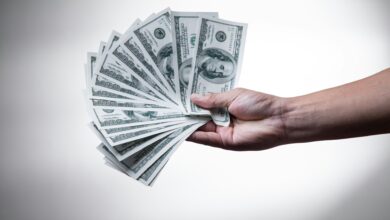The Ethical Consumer: Understanding Sustainability Certifications and Labor Practices

Table of Contents
Ethical consumerism is rapidly gaining traction in the US as more people become aware of the impact their purchases have on the environment and society. This growing trend reflects a shift towards more responsible shopping habits, where consumers prioritize products that are sustainably produced and ethically sourced. As awareness increases, consumers are becoming more selective about the brands they support, seeking to make purchases that align with their values.
The fast fashion industry and unsustainable production methods have severe environmental and social consequences. Unethical labor practices, such as low wages and poor working conditions, are rampant in many manufacturing sectors. Additionally, the environmental impact of clothing production is staggering, contributing to pollution, waste, and resource depletion. The fast fashion model promotes overconsumption and waste, with an estimated 92 million tons of textile waste generated annually worldwide. The environmental footprint of this industry includes high water usage, significant carbon emissions, and the release of hazardous chemicals.
Ethical consumerism offers a solution to these problems by promoting reduced environmental impact, supporting fair labor practices, and empowering consumers to make responsible choices. By opting for products that are certified for sustainability and ethical labor practices, consumers can drive positive change in the industry. Ethical consumerism encourages mindful purchasing decisions, leading to a decrease in demand for fast fashion and a subsequent reduction in its detrimental effects. Additionally, supporting brands that adhere to ethical standards helps create a market where fair labor and environmental stewardship are prioritized.
Demystifying Sustainability Certifications
Key Sustainability Certifications Explained:
Global Organic Textile Standard (GOTS):
- Overview: GOTS is a leading certification for organic fibers, ensuring environmentally and socially responsible manufacturing. Products with this certification meet high standards for organic materials, chemical restrictions, and fair labor practices.
- Benefits: GOTS-certified products are free from toxic chemicals and produced under ethical labor conditions. This certification ensures the entire supply chain, from harvesting raw materials to labeling, is sustainable.
- Impact: Supporting GOTS-certified brands helps reduce environmental pollution and promotes better working conditions in the textile industry.
- Example Brands: Patagonia, People Tree
- Website: GOTS
Fair Trade Certified:
- Overview: Fair Trade Certified products ensure that farmers and workers receive fair wages and work in safe conditions. This certification also supports community development and environmental sustainability.
- Benefits: Purchasing Fair Trade Certified products helps improve the livelihoods of workers in developing countries and promotes sustainable farming practices.
- Impact: Fair Trade practices contribute to poverty alleviation, sustainable development, and environmental protection.
- Example Brands: Ten Thousand Villages, Alter Eco
- Website: Fair Trade Certified
Oeko-Tex Standard 100:
- Overview: Oeko-Tex Standard 100 certifies that textiles are free from harmful substances. Products are tested for chemicals that can harm human health, ensuring safe and sustainable clothing.
- Benefits: This certification provides consumers with assurance that the textiles they purchase are safe for human use and environmentally friendly.
- Impact: Supporting Oeko-Tex certified brands reduces exposure to harmful chemicals and supports safer production practices.
- Example Brands: H&M Conscious, Calvin Klein
- Website: Oeko-Tex
Bluesign®:
- Overview: Bluesign® ensures that products are made with a focus on resource productivity, consumer safety, water and air emissions, and occupational health and safety.
- Benefits: This certification aims to reduce the environmental impact of textile manufacturing and ensures safe and sustainable processes.
- Impact: Bluesign® helps reduce environmental pollution and promotes the efficient use of resources in the textile industry.
- Example Brands: The North Face, Columbia
- Website: Bluesign
Choosing the Right Certification:
When selecting products, consider certifications that align with your values. For example, if you prioritize organic materials, look for GOTS-certified items. If fair labor practices are important to you, choose Fair Trade Certified products. Use long-tail keywords like “ethical clothing brands for women using organic cotton” to find brands that meet your criteria. A decision-making framework can help prioritize certifications based on personal values, ensuring that your purchases reflect your ethical standards.
Relevant Resources:
Understanding Labor Practices in the Fashion Industry
The Dark Side of Fast Fashion:
Fast fashion is notorious for exploiting workers, offering low wages, and providing unsafe working conditions. The industry’s reliance on cheap labor has led to widespread human rights abuses. According to the International Labour Organization, millions of workers in the fashion industry suffer from poor working conditions and lack of labor rights. The rapid production cycle and cost-cutting measures result in long working hours, inadequate safety measures, and insufficient wages.
Relevant Resources:
- International Labour Organization
- Fashion Revolution
How to Identify Ethical Brands:
Research Brand Transparency:
- Overview: Look for brands that publish transparency reports detailing their labor practices and supply chain. Brands that are transparent about their operations are more likely to be committed to ethical practices.
- Benefits: Transparency allows consumers to make informed decisions and hold brands accountable for their practices.
- Impact: Supporting transparent brands encourages industry-wide adoption of ethical practices.
- Example Brands: Everlane, Reformation
- Website: Everlane, Reformation
Certifications:
- Overview: Choose brands certified by organizations like the Fair Wear Foundation, which ensures fair labor conditions. Use specific keywords like “Fair Wear Foundation certified brands” to find trustworthy companies.
- Benefits: Certifications provide assurance that brands adhere to ethical labor standards.
- Impact: Supporting certified brands helps improve labor conditions and promotes fair wages in the fashion industry.
- Example Brands: Nudie Jeans, Patagonia
- Website: Fair Wear Foundation
Ethical Brand Directories:
- Overview: Utilize online directories that list ethical brands and their practices. These resources often include reviews and ratings based on labor practices and environmental impact.
- Benefits: Directories simplify the process of finding ethical brands and provide comprehensive information on their practices.
- Impact: Using ethical brand directories helps consumers make responsible purchasing decisions and supports brands committed to sustainability.
- Example Directories: Good On You, Ethical Consumer
- Website: Good On You, Ethical Consumer
Becoming an Empowered Ethical Consumer
Building an Ethical Wardrobe:
Practical Steps:
- Overview: Start by identifying key pieces that you need and look for sustainable options. Use keywords like “building an ethical wardrobe” and “sustainable clothing brands list” to find eco-friendly choices.
- Benefits: Building an ethical wardrobe reduces your environmental footprint and supports fair labor practices.
- Impact: A well-curated ethical wardrobe promotes sustainable fashion and helps reduce the demand for fast fashion.
- Example Brands: Pact, Eileen Fisher
- Website: Pact, Eileen Fisher
Product Categories:
- Overview: For specific items like shoes, use long-tail keywords such as “ethical sneakers brands” to find suitable options.
- Benefits: Focusing on specific product categories makes it easier to find ethical alternatives for everyday items.
- Impact: Supporting ethical brands across different categories promotes a comprehensive approach to sustainable fashion.
- Example Brands: Veja, Allbirds
- Website: Veja, Allbirds
Ethical Shopping Beyond Fashion:
Sustainable Food Choices:
- Overview: Prioritize local and organic produce. Use location-based keywords like “ethical grocery stores near me” to find local options.
- Benefits: Choosing sustainable food options supports local farmers and reduces environmental impact.
- Impact: Ethical food choices contribute to a more sustainable and healthy food system.
- Example Stores: Whole Foods, Trader Joe’s
- Website: Whole Foods, Trader Joe’s
Ethical Home Goods:
- Overview: Choose home goods made from recycled materials. Use keywords like “sustainable home goods brands” to find ethical options.
- Benefits: Ethical home goods reduce waste and support sustainable production practices.
- Impact: Supporting brands that produce sustainable home goods helps reduce the environmental footprint of your household.
- Example Brands: West Elm, The Citizenry
- Website: West Elm, The Citizenry
Eco-Friendly Electronics:
- Overview: Look for electronics that are energy-efficient and responsibly sourced. Use keywords like “ethical electronics brands” to find suitable products.
- Benefits: Eco-friendly electronics reduce energy consumption and support responsible sourcing of materials.
- Impact: Choosing sustainable electronics helps reduce the environmental impact of electronic waste and resource extraction.
- Example Brands: Fairphone, Dell (sustainable line)
- Website: Fairphone, Dell
Using Tools & Apps to Shop Ethically:
Good On You App:
- Overview: This app rates brands on their sustainability and labor practices, helping you make informed choices.
- Benefits: The Good On You app provides easy access to information on ethical brands.
- Impact: Using the app promotes transparency and encourages brands to adopt ethical practices.
- Example: Good On You App
- Website: Good On You
Higg Index:
- Overview: Use this tool to understand the environmental impact of different materials and products.
- Benefits: The Higg Index helps consumers make informed decisions based on the sustainability of materials.
- Impact: Supporting products with a lower environmental impact promotes sustainable fashion.
- Example: Higg Index
- Website: Higg Index
B Lab:
- Overview: Check the ethical credentials of companies certified as B Corporations.
- Benefits: B Corporations meet high standards for social and environmental performance.
- Impact: Supporting B Corporations encourages businesses to prioritize ethical practices.
- Example: B Corporation Directory
- Website: B Corporation Directory
Educating Yourself and Others
A. Continuous Learning: Staying Updated on Ethical Consumerism:
Follow Ethical Consumerism Blogs:
- Overview: Read blogs dedicated to ethical consumerism for the latest news and insights.
- Benefits: Staying informed helps you make better purchasing decisions and stay updated on industry trends.
- Impact: Regularly consuming content on ethical consumerism keeps you engaged and motivated to make responsible choices.
- Example Blogs: Eco Warrior Princess, Ethical Consumer
- Website: Eco Warrior Princess, Ethical Consumer
Documentaries and Books:
- Overview: Watch documentaries and read books about the impact of fast fashion and ethical consumerism.
- Benefits: These resources provide in-depth knowledge and compelling narratives that can inspire change.
- Impact: Educating yourself through documentaries and books can deepen your understanding and commitment to ethical consumerism.
- Example Resources: “The True Cost” (documentary), “Conscious Chatter” (podcast)
- Website: The True Cost, Conscious Chatter
Influential Voices:
- Overview: Follow thought leaders like Livia Firth and Aja Barber, who advocate for sustainable fashion.
- Benefits: Influential voices offer inspiration and guidance on ethical consumerism.
- Impact: Engaging with thought leaders helps spread awareness and promote ethical practices in fashion.
- Example Influencers: Livia Firth, Aja Barber
- Website: Livia Firth, Aja Barber
B. Shopping with Confidence: Tools & Apps:
Good On You App:
- Overview: This app rates brands on their sustainability and labor practices, helping you make informed choices.
- Benefits: The Good On You app provides easy access to information on ethical brands.
- Impact: Using the app promotes transparency and encourages brands to adopt ethical practices.
- Example: Good On You App
- Website: Good On You
Higg Index:
- Overview: Use this tool to understand the environmental impact of different materials and products.
- Benefits: The Higg Index helps consumers make informed decisions based on the sustainability of materials.
- Impact: Supporting products with a lower environmental impact promotes sustainable fashion.
- Example: Higg Index
- Website: Higg Index
B Lab:
- Overview: Check the ethical credentials of companies certified as B Corporations.
- Benefits: B Corporations meet high standards for social and environmental performance.
- Impact: Supporting B Corporations encourages businesses to prioritize ethical practices.
- Example: B Corporation Directory
- Website: B Corporation Directory
Empowering Others for Change
A. Spreading Awareness and Advocacy:
Open Dialogue:
- Overview: Discuss ethical consumerism with friends and family to raise awareness.
- Benefits: Open dialogue helps spread awareness about the importance of ethical consumerism.
- Impact: Raising awareness encourages more people to make responsible purchasing decisions.
- Example: Family discussions, social media posts
- Website: Fashion Revolution
Share Experiences:
- Overview: Share your journey on social media to inspire others.
- Benefits: Sharing experiences provides practical examples and encourages others to join the movement.
- Impact: Social media can amplify the message of ethical consumerism and inspire broader change.
- Example: Instagram posts, blog articles
- Website: Instagram Ethical Fashion
B. Supporting Ethical Businesses:
Local Retailers:
- Overview: Support local businesses that prioritize sustainability.
- Benefits: Supporting local retailers reduces environmental impact and supports the local economy.
- Impact: Choosing local, sustainable businesses helps promote ethical practices in your community.
- Example Stores: Local farmers’ markets, eco-friendly boutiques
- Website: Local Harvest, Green America
Advocacy:
- Overview: Encourage others to support ethical brands and practices.
- Benefits: Advocacy helps spread the message of ethical consumerism and encourages responsible shopping habits.
- Impact: Collective advocacy can drive industry-wide change and promote sustainability.
- Example Activities: Community events, online petitions
- Website: Change.org, Avaaz
C. Holding Businesses Accountable:
Express Concerns:
- Overview: Contact brands to express your concerns about unethical practices.
- Benefits: Expressing concerns can pressure brands to adopt ethical practices.
- Impact: Holding businesses accountable encourages them to prioritize sustainability and fair labor practices.
- Example: Email campaigns, social media messages
- Website: Fashion Revolution’s #WhoMadeMyClothes
Vote with Your Wallet:
- Overview: Support brands that align with your values.
- Benefits: Voting with your wallet helps drive demand for ethical products.
- Impact: Consumer demand can influence brands to adopt more ethical and sustainable practices.
- Example Brands: Everlane, Patagonia
- Website: Everlane, Patagonia
Looking Towards the Future:
Optimism:
- Overview: Highlight the potential for collective action to create a sustainable future.
- Benefits: Optimism can inspire individuals to take action and contribute to positive change.
- Impact: A positive outlook can motivate more people to join the ethical consumer movement.
- Example Stories: Success stories of brands making a difference
- Website: Success Stories on Ethical Fashion
Success Stories:
- Overview: Share examples of positive change driven by ethical consumerism.
- Benefits: Success stories provide tangible evidence of the impact of ethical consumerism.
- Impact: Highlighting positive outcomes can encourage more people to adopt ethical practices.
- Example Stories: Case studies of ethical brands
- Website: Fair Trade Success Stories
The ethical consumer movement is vital for driving change in the fashion industry and beyond. Ethical consumerism empowers individuals to make informed choices that support sustainability and fair labor practices. The importance of making ethical choices cannot be overstated, as these decisions have far-reaching implications for the environment, society, and future generations.
Actionable Steps:
- Educate yourself about sustainability certifications and ethical labor practices.
- Support brands that prioritize ethical practices and transparency.
- Use tools and resources like the Good On You app to make informed purchasing decisions.
- Share your journey and advocate for ethical consumerism to inspire others.
- Hold businesses accountable by expressing concerns and voting with your wallet.
The Impact of Collective Action:
When individuals come together to support ethical consumerism, they create a powerful force for change. Collective action can drive demand for sustainable products, encourage brands to adopt ethical practices, and ultimately lead to a more sustainable and equitable world.
Optimism for the Future:
The future of ethical consumerism looks promising as more people become aware of the importance of making responsible choices. With continued education, advocacy, and support for ethical brands, we can create a future where sustainability and fair labor practices are the norm.
By embracing ethical consumerism, individuals can make a significant impact on the world. Every purchase is a vote for the kind of world we want to live in, and by choosing ethical products, we can help create a more sustainable and just future for all.
Ethical Consumer FAQ: Your Questions Answered
This FAQ tackles common questions you might have about ethical consumerism and making informed purchasing decisions:
1. What exactly is ethical consumerism?
Ethical consumerism is about making conscious choices about the products you buy, considering the environmental and social impact of their production. This involves factors like fair labor practices, sustainable materials, and responsible manufacturing practices.
2. Why should I care about ethical consumerism?
Fast fashion and unsustainable production have significant consequences, from polluting the environment to exploiting workers. Ethical consumerism allows you to support responsible businesses and contribute to a more sustainable future.
3. Sustainability certifications seem confusing. Can you help?
Yes! This blog post explores major certifications like GOTS and Fair Trade Certified. Research these certifications and prioritize brands that align with your values (e.g., organic materials, fair labor).
4. Ethical clothing seems more expensive. Can I still afford it?
Ethical clothing can be an investment, but consider cost-per-wear for true value. Prioritize quality pieces that last longer. You can also shop ethically on a budget by seeking out thrift stores, buying secondhand, or supporting sustainable brands with sales or discounts.
5. How do I identify ethical clothing brands?
Research brand websites and transparency reports. Look for certifications like those mentioned above. Utilize online directories or apps dedicated to ethical brands.
6. Ethical consumerism goes beyond clothing, right?
Absolutely! Think about sustainable food choices (buying local, organic), eco-friendly electronics (recycled materials, responsible e-waste disposal), and ethical beauty products (cruelty-free, minimal packaging).
7. Where can I find more information and resources?
This blog post offers a starting point! Explore the resources section for websites, organizations, and mobile apps dedicated to ethical consumerism. Educational documentaries and podcasts can also offer valuable insights.
8. How can I make a real difference as a single consumer?
Every ethical purchase contributes! Collectively, conscious consumers drive change. Share your journey with friends and family, influencing others to embrace ethical shopping. This creates a powerful ripple effect.
9. Is ethical consumerism a passing trend?
The movement is gaining momentum due to growing environmental and social concerns. As awareness increases, ethical consumerism is likely to become the norm, not a fad.
10. I want to start being an ethical consumer. What’s the first step?
Start small! Choose one aspect, like researching organic cotton clothing or buying local produce. Gradually incorporate more ethical practices into your life. Remember, progress, not perfection, is key!








